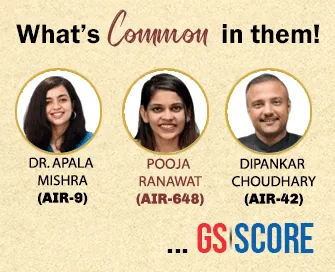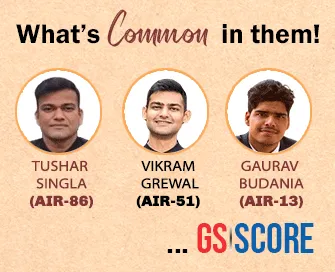

23rd May 2025 (13 Topics)
Mains Issues
Context
The rising culture of self-promotion, particularly driven by social media, and contrasts it with Buddhist philosophical teachings on selflessness. Recent scholarly works—like How to Lose Yourself by Garfield, Heim, and Sharf; Dust on the Throne by Douglas Ober; and Casting the Buddha by Shashank Shekhar Sinha—offer new insights into the Buddhist view of the self, its historical continuity in India, and the monumental legacy of Buddhist sites.
Buddhism, Selfhood, and Its Enduring Relevance in Contemporary India
- Rise of Self-Centric Culture
- Digital Identity and Obsession: Social media platforms have encouraged a culture of self-promotion and perfectionism, often at the cost of emotional well-being and social harmony.
- Psychological Consequences: The relentless pursuit of validation leads to anxiety, dissatisfaction, and a disconnection from authentic self-awareness.
- Buddhist Philosophy as Counter-Narrative:
- Doctrine of Non-Self (Anatta): Buddhism posits that the self is an illusion; attachment to ego leads to suffering. Letting go fosters clarity and compassion.
- Interdependence and Letting Go: The teachings advocate the recognition of interdependence in human experience, promoting humility and social responsibility.
- Re-examining Buddhist History in India
- Myth of Disappearance: Douglas Ober’s work Dust on the Throne contests the claim that Buddhism vanished post-13th century, asserting an ongoing but undocumented presence.
- Role in Reform Movements: Buddhism significantly influenced colonial and postcolonial reforms, including anti-caste activism, secularism, and identity assertion.
- Cultural and Monumental Legacy
- Living Buddhist Monuments: As per Shashank Shekhar Sinha, sites like Sanchi and Bodh Gaya serve as evolving socio-religious ecosystems, reflecting dynamic cultural narratives.
- Role of Communities and Patrons: Figures like J.K. Birla contributed to the preservation and revival of Buddhist architecture and pilgrimage sites, demonstrating elite engagement with the tradition.
- Buddhism and Modern Indian Society:
- Dalit Assertion and Ambedkarite Legacy: R. Ambedkar’s conversion and advocacy for Buddhism empowered marginalized communities and reintroduced Buddhist principles into public discourse.
- Continued Relevance: The ideals of classlessness, compassion, and ethical governance from Buddhist thought remain pertinent in addressing modern India's challenges like inequality and discrimination.
PYQ:What teachings of Buddha are most relevant today and why? Discuss. (2020) |


Mains Issues
Context
On May 22, 2025, Prime Minister Narendra Modi is set to inaugurate 103 modernized railway stations across 18 states under the Amrit Bharat Station Scheme, marking a significant step in upgrading India's railway infrastructure to improve passenger experience, accessibility, and regional integration.
Amrit Bharat Station Scheme:
- Phased Redevelopment: The scheme adopts a phased, station-specific approach to modernization based on individual station requirements.
- Enhanced Passenger Amenities: It focuses on cleaner, safer, and more comfortable stations, including better waiting halls, toilets, roofing, and facilities like escalators, lifts, and Wi-Fi.
- Integration with Local Culture: Redeveloped stations reflect local heritage and architecture, promoting regional identity through design themes inspired by historical and cultural landmarks.
Inclusivity and Sustainability Measures
- Accessibility for Divyangjans: The scheme aligns with the Sugamya Bharat Mission, incorporating facilities such as ramps, Braille signages, low-height counters, and tactile pathways for differently-abled passengers.
- Eco-friendly and Noise Reduction Initiatives: Emphasis on sustainable infrastructure includes greener stations, noise-free tracks, and eco-sensitive construction practices.
- Multimodal Connectivity: Stations are integrated with other transport systems like buses and metros, enhancing last-mile connectivity and urban linkages.
Economic and Social Impacts:
- One Station One Product (OSOP) Initiative: Stations become platforms to promote local indigenous products and crafts, supporting regional economies and artisan communities.
- Vibrant Urban Hubs: Beyond transportation, stations are envisioned as multifunctional city centers with food courts, kiosks, executive lounges, and cultural spaces.
- Heritage and Tourism Boost: Incorporation of local architectural themes fosters cultural tourism and community pride.
PYQ:“Discuss the role of infrastructure development in promoting regional economic growth and social inclusion in India. Illustrate your answer with examples from recent government initiatives.” (2021) |


Mains Issues
Context
The Telangana government’s decision to allot 400 acres of Kancha Gachibowli urban forest for industrial development triggered nationwide concern. Following the felling of 100 acres of trees, the Supreme Court reprimanded the State, emphasizing the vulnerability of urban forests amid rapid urbanisation and their crucial role in environmental sustainability.
Understanding the Significance and Challenges of Urban Forests:
- Importance of Urban Forests
- Environmental Benefits: Urban forests mitigate urban heat island effect, reduce pollution by absorbing PM 2.5 and PM 10 particulates, sequester carbon, and control stormwater and erosion.
- Biodiversity Conservation: These green spaces serve as habitats for endangered species, ensuring ecological balance within urban areas.
- Social and Cultural Importance: Urban forests provide recreational spaces, improve mental health, and enhance the quality of urban life by offering repose and connection to nature.
- Current Threats to Urban Forests in India:
- Urban Expansion and Industrial Development: Increasing urban sprawl and industrial projects threaten green spaces, exemplified by Kancha Gachibowli and other forests like Aarey (Mumbai), Turahalli (Bengaluru).
- Pollution and Climate Stress: Rising pollution levels, as seen in Delhi and other metropolitan cities, underline the urgent need for urban forest protection.
- Judicial and Policy Interventions:
- Legal Safeguards: Landmark cases like the Godavarman case (1996) expanded forest definitions to include urban greenery. Supreme Court and High Courts have intervened to protect forests in Delhi, Mumbai, and Rajasthan.
- Constitutional Provisions: Article 21 (Right to Life), Article 48A (Directive Principles), and Article 51A(g) (Fundamental Duties) mandate environmental protection and preservation of forests.
- Government Missions and Policies: National Forest Policy (1988), National Mission for Green India (2014), Smart Cities Mission (2015), and Atal Mission for Rejuvenation and Urban Transformation integrate ecological concerns into urban planning.
- Balancing Urban Growth and Ecological Preservation:
- Integrated Urban Planning: Incorporate urban forests as essential components of city infrastructure plans to balance development and ecology.
- Community Participation and Awareness: Strengthen civil society involvement and awareness campaigns to protect urban forests.
- Strict Implementation of Environmental Laws: Ensure compliance with judicial orders and environmental regulations with stringent penalties for violations.
- Promote Eco-friendly Urban Models: Foster sustainable urban development using green architecture, pollution control, and preservation of natural habitats.
Nagar Van Yojana (NVY)Overview:
Financial Support:
Coverage & Scope:
Biodiversity & Ecological Focus:
Community Participation:
Significance:
|
PYQ:"What are the major environmental challenges faced by Indian cities? Discuss the role of urban forests in addressing these challenges." (2019) |


Mains Issues
Context
The Enforcement Directorate (ED) conducted raids on TASMAC, a Tamil Nadu state-run liquor body, under the PMLA, prompting the state government to allege federal overreach. The Supreme Court intervened, staying the proceedings and cautioning the ED against violating constitutional federalism. The case underscores tensions between central investigative powers and state autonomy.
Enforcement Directorate: Role and Powers:
- ED enforces PMLA, 2002, empowered to probe financial crimes including money laundering and related corruption.
- The agency has jurisdiction over crimes with money laundering components but must operate within constitutional limits, especially regarding state subjects.
Federalism and Constitutional Provisions:
- Federalism in India is based on the distribution of powers between the Union and States via the Seventh Schedule of the Constitution.
- Liquor trade and regulation fall under the State List (Entry 51); hence, governance of TASMAC is primarily a state subject.
- Article 246(3): Parliament cannot legislate on State List subjects except in specified situations.
- Article 257 restricts the Union from interfering in State governance.
- Supreme Court’s role: Protecting federalism by checking overreach by Union agencies like ED.
Key Issues Highlighted:
- Jurisdictional Overreach: ED’s probe into a state PSU raises questions on the extent of its powers, especially when FIRs are filed against individuals, not the corporation.
- Privacy and Data Protection: Seizure and cloning of phones by ED bring forward concerns about violation of privacy rights under Article 21, which includes the Right to Privacy as recognized by the Supreme Court in the landmark Puttaswamy case (2017).
- Political Neutrality: The timing and conduct of probes into state governments’ affairs can affect democratic federalism and may reflect political motives, undermining trust in central agencies.
- Legal Ambiguity: Lack of clear legal boundaries on ED’s authority over state PSUs can lead to institutional conflicts.
Judicial Checks and Balances:
- Supreme Court’s intervention demonstrates the judiciary’s crucial role in:
- Upholding the constitutional federal structure.
- Protecting individual rights, including privacy.
- Ensuring investigative agencies act within the ambit of law.
- Past precedents such as Godavarman case (1996) reflect the judiciary’s role in environmental and federal issues, similarly applicable here for institutional balance.
Governance and Accountability Implications:
- Central investigative agencies must balance effective anti-corruption enforcement with respect for constitutional boundaries.
- Institutional accountability is essential to prevent misuse of power.
- Enhanced transparency and cooperation between Union and States are critical for seamless governance.
Way Forward:
- Legislative reforms to clearly define ED’s jurisdiction limits concerning state government entities and PSUs.
- Establishment of inter-agency protocols promoting coordination between State governments and ED.
- Strengthening the Right to Privacy safeguards in investigation procedures, aligned with Supreme Court guidelines.
- Encouraging judicial oversight to safeguard federalism and prevent arbitrary use of investigative powers.
- Promoting cooperative federalism through dialogue and trust-building mechanisms between Centre and States.
PYQ:
|


Mains Issues
Context
The Second Lancet Commission on Adolescent Health and Wellbeing released its concluding report, warning that insufficient investment and poorly targeted funding threaten the future of adolescent health globally. It projects alarming trends by 2030, including a surge in mental health disorders, obesity, and the number of adolescents living in multi-burden countries, highlighting an urgent need for focused global policy and financial action.
Global Adolescent Health
- Underinvestment in Adolescent Health: The report highlights that global funding for adolescent health and wellbeing is grossly insufficient and disproportionate to the size and complexity of challenges faced by this group.
- Adolescent Population Share: Adolescents (ages 10–24) represent approximately 2% of the global population, yet they receive only 2.4% of total development assistance for health (2016–2021).
- Multi-Burden Countries Projection by 2030: Without enhanced investment, at least 1 billion adolescents will be living in “multi-burden countries” by 2030—characterised by excessive and complex disease burdens.
- Rise in Obesity Among Adolescents: By 2030, 464 million adolescents globally are projected to be overweight or obese, a significant rise of 143 million from 2015 levels.
- Mental Health Burden: The report projects a loss of 42 million years of healthy life to mental disorders and suicide by 2030, which is 2 million years more than the 2015 figure.
- Insufficient Targeting: Not only is funding inadequate, but it is also poorly targeted, failing to reach adolescents in countries with the most urgent needs or highest disease burdens.
- Lancet Commission's Call to Action: The Commission urges greater and more strategic investment in adolescent health as a critical development priority, essential for achieving the 2030 Sustainable Development Goals (SDGs).


Mains Issues
Context
India has introduced Nafithromycin, its first new antibiotic in nearly 30 years, to combat the rising challenge of antimicrobial resistance (AMR). AMR is causing increasing deaths due to drug-resistant infections globally and in India. This development highlights the critical need for enhanced research, healthcare practices, and regulation to address this public health threat.
Antimicrobial Resistance (AMR)
- Antimicrobial Resistance (AMR) occurs when microorganisms (bacteria, viruses, fungi, and parasites) evolve resistance to antimicrobial drugs previously effective against them.
- Global Impact:
- In 2019, AMR caused 1.27 million deaths globally (IHME, University of Washington).
- Projected deaths due to AMR by 2050: 1.91 million (direct), 8.22 million (associated) – The Lancet study.
Major Drivers of AMR
- Misuse of Antibiotics: Self-medication and over-the-counter antibiotic sales in India.
- Non-Human Use: Over 70% of antibiotics are used in livestock, aquaculture, and agriculture.
- Inadequate Diagnostics: Delayed antibiogram results and incorrect treatments.
- Healthcare System Gaps:
- Poor infection control in hospitals.
- Lack of communication and accountability.
- Substandard medical equipment and overburdened healthcare workers.
Governmental and Institutional Efforts:
- Policy Framework:
- National Action Plan on AMR (2017).
- AMR surveillance networks.
- Public awareness initiatives.
- Regulatory Actions:
- Ban on colistin as a growth promoter in poultry.
- Emphasis on prescription-only antibiotic sales (yet poorly enforced).
Challenges in Antibiotic Development:
- Economic Disincentives: Low ROI compared to chronic disease drugs.
- Regulatory Bottlenecks: Cumbersome clinical trial approval processes.
- Accessibility Issues: Pricing disparities across regions. Example: 80% price difference between India and the US.
- Misuse of New Molecules: Early resistance reported to advanced formulations like Ceftazidime-avibactam.
Way Forward
- Strengthening Regulatory Frameworks:
- Enforce prescription-only sales of antibiotics.
- Monitor and penalize illegal over-the-counter antibiotic dispensing.
- Improving Diagnostic Infrastructure:
- Invest in rapid diagnostic labs and antibiogram testing tools.
- Ensure equipment quality and trained diagnostic personnel in all tiers of healthcare.
- Boosting Public Awareness:
- Integrate AMR education in school curriculums and public campaigns.
- Dispel myths about antibiotics being cure-alls for viral infections.
- Incentivizing R&D:
- Support small pharma through funding, tax incentives, and fast-track approvals.
- Promote public-private partnerships in drug discovery.
- Global Collaboration and Surveillance:
- Share data across borders to trace and contain resistant strains.
- Contribute to global AMR strategies under WHO's One Health framework.
- Institutionalizing Antibiotic Stewardship:
- Mandate hospital-based AMR control programs.
- Train healthcare workers in responsible prescribing practices.
Nafithromycin:
Significance:
|


Prelims Articles
Context
Cauvery Water Management Authority (CWMA) has reviewed the current water storage levels in the Cauvery basin ahead of the upcoming monsoon and the scheduled water release by Tamil Nadu from the Mettur reservoir on June 12, 2025. This review is crucial for managing inter-State water sharing, especially between Tamil Nadu and Karnataka, and aligns with the upcoming Cauvery Water Regulation Committee (CWRC) meeting on June 10, 2025, which will discuss the water release plan.
Cauvery Water Management Authority (CWMA):
Background
- It is established on June 1, 2018 under section 6A of the Inter-State River Water Disputes Act, 1956
Legal & Constitutional Basis
- Article 262 of the Constitution empowers Parliament to adjudicate inter-State river water disputes
- Inter-State River Water Disputes Act, 1956 provides legal framework for setting up tribunals/authorities
- SC Ruling (2018): SC directed the Union Government to form CWMA to ensure compliance with the Tribunal’s modified water-sharing formula
Structure
- The chairperson is ppointed by the Central Govt (typically a senior official from the Central Water Commission)
Members:
- Officials from: Ministry of Jal Shakti (formerly Water Resources), Ministry of Agriculture, etc.
- Chief Secretaries of 4 basin regions: Karnataka, Tamil Nadu, Kerala, Puducherry (UT)
Functions of CWMA
- To supervise storage and release of water in the Cauvery basin
- To ensure implementation of:
- CWDT Award (2007)
- Supreme Court’s modified allocations (2018)
- To Coordinate with:
- Cauvery Water Regulation Committee (CWRC)
- State governments
- To undertake corrective actions during distress years (poor monsoon, low storage)
- To resolve conflicts regarding water releases
Kaveri (Cauvery) River
Major Tributaries
|


Prelims Articles
Context
54 Indians on death row in foreign jails, focusing on the case of Nimisha Priya, a Malayali sentenced to death in Yemen. It also discusses the efforts by Kerala’s NoRKA-Roots agency to appoint legal consultants abroad to support Keralites involved in serious legal cases overseas.
Vienna Convention on Consular Relations, 1963:
About:
- The Vienna Convention on Consular Relations (VCCR) is a key international treaty that establishes the legal framework governing consular relations between independent states.
- It formalizes various consular practices developed through customary international law and bilateral agreements.
- The Convention was adopted on 24 April 1963 during the United Nations Conference on Consular Relations held in Vienna, Austria.
Key Provisions:
- Total Articles: The treaty comprises 79 articles and the preamble confirms that customary international law continues to apply to issues not explicitly covered by the Convention.
- Article 5 – Consular Functions: Lists 13 principal duties of consuls, including protecting the interests of their home country and its citizens abroad, assisting nationals in distress, and fostering friendly relations between the sending and receiving states.
- Article 23 – Persona Non Grata: The host country can declare any consular officer persona non grata at any time. The sending country must then recall that person, or else the individual loses consular immunity.
- Article 31 – Inviolability of Consular Premises: The receiving state must respect the consulate’s premises and cannot enter or damage them without consent.
- Article 35 – Freedom of Communication: Consular communications with their home country are protected; consular bags cannot be opened or detained, and consular couriers cannot be arrested or detained.
- Article 36 – Communication with Nationals: Consular officers have the right to communicate with, visit, and assist their detained or arrested nationals in the host country.
- Article 37 – Notification: The receiving state must promptly inform consular officers if a national of the sending state dies, a guardian is appointed, or a vessel or aircraft of the sending state is involved in an incident.
- Article 40 – Protection of Consular Officers: The receiving state is responsible for ensuring consular officers are treated with respect and protected from any attack on their person, freedom, or dignity.
- Articles 58-68 – Honorary Consuls: These articles define the role, functions, and privileges of honorary consular officers, who perform limited consular duties.
NoRKA-Roots Initiative:Non-Resident Keralites Affairs (NoRKA) -Roots Initiative
Key Functions
Legal Assistance Focus
|


Prelims Articles
Context
President Droupadi Murmu on Thursday conferred six Kirti Chakras, including four posthumously, to personnel of the Army and Jammu and Kashmir Police for displaying indomitable courage and extraordinary valour in the line of duty.
Gallantry Awards:
- After Independence, India instituted its first three wartime gallantry awards on 26 January 1950, effective retrospectively from 15 August 1947: Param Vir Chakra, Maha Vir Chakra, and Vir Chakra.
- In 1952, India introduced three peacetime gallantry awards called Ashoka Chakra Class-I, Class-II, and Class-III, also effective from 15 August 1947.
- In January 1967, the Ashoka Chakra Class-I, II, and III awards were renamed as Ashoka Chakra, Kirti Chakra, and Shaurya Chakra respectively.
- The official order of precedence for Indian gallantry awards is: Param Vir Chakra, Ashoka Chakra, Maha Vir Chakra, Kirti Chakra, Vir Chakra, and Shaurya Chakra.
- These gallantry awards recognize acts of valor and bravery during wartime and peacetime, with the Param Vir Chakra and Ashoka Chakra being the highest wartime and peacetime honors, respectively.
- The Gallantry awards are announced twice annually: on Republic Day (26 January) and Independence Day (15 August).
- The awards serve to honor military personnel as well as civilians who display extraordinary courage in the face of danger.
Types of Gallantry award:
- Param Vir Chakra (PVC): It is highest military decoration awarded for displaying distinguished acts of valor, courage, or self-sacrifice in the presence of the enemy during war or conflict. It is established on 26th January 1950.
- Ashoka Chakra (AC): It is highest peacetime gallantry award given for valor, courageous action, or self-sacrifice away from the battlefield (including counter-insurgency operations). It is instituted in 1952 as Ashoka Chakra Class-I, renamed in 1967.
- Maha Vir Chakra (MVC): It is second highest wartime gallantry award, recognizing acts of conspicuous gallantry in the presence of the enemy. It is established alongside PVC in 1950.
- Kirti Chakra (KC): It is second highest peacetime gallantry award awarded for acts of valor, courage, or self-sacrifice other than in the face of the enemy. It is originally Ashoka Chakra Class-II, renamed in 1967.
- Vir Chakra (VrC): It is yhird highest wartime gallantry award for acts of bravery in the battlefield. It is instituted in 1950.
- Shaurya Chakra (SC): It is third highest peacetime gallantry award awarded for gallantry other than in the face of the enemy. It is originally Ashoka Chakra Class-III, renamed in 1967.


Prelims Articles
Context
In recent remarks by U.S. Health Secretary Robert F. Kennedy Jr., who announced a large-scale testing and research initiative to investigate environmental toxins as potential causes of Autism Spectrum Disorders (ASD).
Autism Spectrum Disorder (ASD):
- ASD is a neurodevelopmental disorder that affects communication, social interaction, and behaviour, typically appearing within the first three years of life.
- It is a spectrum disorder, meaning symptoms and severity vary widely among individuals.
Characteristics of ASD:
- Individuals may have difficulty with social communication, maintain repetitive behaviors, and show intense interest in specific topics.
- Unlike mental retardation, many individuals with ASD show exceptional abilities in fields like mathematics, art, or music.
Causes and Risk Factors:
- There is no single known cause; both genetic and environmental factors contribute to ASD risk.
- Advanced parental age, prenatal exposure to certain drugs, and family history of autism can be potential contributors.
Symptoms
- Key signs include reduced eye contact, delayed language development, trouble with conversation, and repetitive motor movements.
- Children may resist changes in routine and have unusually strong responses to sensory stimuli.
Diagnosis and Management
- Diagnosis is typically made by behavioral assessment tools and clinical evaluation—there is no blood test for ASD.
- While there is no cure, early intervention using behavioral therapy, special education, and caregiver training can significantly improve outcomes.
Global and Regional efforts to tackle Autism Spectrum Disorder (ASD):Global Efforts
National Initiatives (India)
Associated Goals and Conventions:
|


Editorials
Context
The reimposition of tariffs on AI-critical hardware components by the United States following the 2024 presidential election has triggered a restructuring of global technology supply chains. As the U.S. and China deepen their technological rivalry, countries like India are emerging as strategic alternatives in the global AI ecosystem.
Tariffs and Global Supply Chain Fragmentation
- Tariff Escalation in the AI Sector
- The U.S. introduced tariffs as high as 27% on key AI components such as specialised accelerators and logic chips in 2025.
- Electronics imports to the U.S. touched $486 billion in 2024, of which $200 billion were related to data processing machines, many from tariff-affected countries like China, Taiwan, Vietnam, and Mexico.
- Impacts on Global AI Infrastructure
- Tariffs are raising infrastructure costs, making the U.S. one of the least cost-efficient locations for building AI capabilities.
- Ironically, some data centre investments are shifting back to China, undermining the intended policy objective of decoupling.
- Case of Supply Chain Disintegration
- The segmentation of supply chains due to tariffs increases inefficiencies and obstructs cross-border technical collaboration, vital for AI innovation.
Economic Implications of Protectionist Trade Policy:
- Distortion of Innovation Ecosystem:
- Empirical studies suggest that a standard deviation increase in tariffs can lead to a 0.4% decline in output growth over five years.
- Deadweight loss arises from reduced trade volumes and diminished consumer and producer welfare.
- Impact on Global Technological Progress:
- AI innovation thrives on access to high-performance computing, cutting-edge hardware, and open research networks.
- Tariffs create a stratification effect, limiting participation to nations with established infrastructure and capital.
- Capital Substitution and Algorithmic Efficiency:
- Companies are increasingly optimising AI systems using algorithmic efficiency and hardware specialisation (e.g., ASICs), reducing dependence on raw computing power.
India's Position in the Restructured Global Order
- Strategic Opportunity as a 'Third Option'
- India is seen as a geopolitical neutral ground amidst U.S.-China tech tensions.
- With IT export growth between 3% to 5.1% and robust AI and digital engineering growth, India is becoming a key stakeholder in the AI economy.
- Strengths and Limitations
- Strengths:
- Large talent pool with 1.5 million engineering graduates annually.
- Government incentives for semiconductor design and fabrication, including multi-billion-dollar fab proposals.
- Limitations:
- Heavy reliance on imported hardware.
- Vulnerability to global supply chain disruptions and tariff shocks.
- India’s Policy Push:
- Programmes like the India Semiconductor Mission and Digital India are pivotal in building domestic resilience.
- Advanced Micro Devices (AMD) $400 million R&D campus in Bengaluru is an example of rising global confidence in India’s AI ecosystem.
Practice Question:
Q. "In light of recent U.S. tariff policies, critically examine how global trade protectionism is influencing the geopolitics of artificial intelligence and India’s strategic position in this context." (250 words)


Editorials
Context
Following Operation Sindoor, which showcased India’s readiness to employ kinetic responses to terrorism, a renewed discussion has emerged on non-kinetic strategies — particularly the use of international law (lawfare) to hold Pakistan accountable for cross-border terrorism. The article emphasizes that India has yet to fully leverage this legal route despite possessing substantial evidence and treaty obligations in its favor.
Legal Tools Available Under International Conventions:
- Multiple Treaties Signed: India and Pakistan are parties to several global and regional terrorism conventions — including the SAARC Convention, the International Convention for the Suppression of the Financing of Terrorism (ICSFT), and the Terrorist Bombing Convention.
- State Obligations: These treaties oblige signatory states to prevent, prosecute, and penalize terrorism and its financing. For instance, Article 2(1) of International Convention for the Suppression of the Financing of Terrorism (ICSFT) clearly criminalizes terror financing.
- Pakistan’s Violation: Despite these obligations, Pakistan has a documented history of sponsoring and financing terrorism, including the 2008 Mumbai attacks and the recent Pahalgam terror attack (April 2024).
Using the International Court of Justice (ICJ):
- ICJ Jurisdiction Clauses: Many terrorism treaties include compulsory jurisdiction provisions, allowing disputes to be referred to the ICJ. Examples include Articles 20(1) (Terrorist Bombing Convention) and 24(1) (ICSFT).
- Legal Precedent: Ukraine successfully invoked similar provisions against Russia under the ICSFT, setting a valuable legal precedent for India.
- India’s Legal Opportunity: India can similarly file a case to publicize Pakistan’s violations, even if the jurisdiction is contested, as it did in the Kulbhushan Jadhav case.
Challenges and the Way Forward
- Jurisdictional Reservations: Pakistan has opted out of the ICJ’s jurisdiction under ICSFT, and India has a reservation under the Terrorist Bombing Convention, limiting options.
- Strategic Correction Needed: India should withdraw its reservation to the Bombing Convention to enable legal proceedings, especially since Pakistan has accepted jurisdiction under it.
- Beyond Legal Outcomes: Even if the case is not successful on legal grounds, the strategic value lies in global opinion-building and aligning lawfare with India’s counterterrorism narrative.
Practice Question:
Q. "How can international law and institutions like the International Court of Justice be used as instruments of state strategy to counter cross-border terrorism? Illustrate with suitable examples." (250 words)


Editorials
Context
The Mahmudabad case has sparked a renewed constitutional and political debate on freedom of speech, discriminatory silencing, and the need for responsible public discourse. This comes amid controversial political remarks post Operation Sindoor, cancellations of public speakers based on identity and ideology, and broader questions of constitutional morality in light of India's First Constitutional Amendment (1951).
Constitutional History and Foundational Shifts:
- First Amendment and Expanded Restrictions: The First Amendment (1951), led by Prime Minister Nehru, introduced broader restrictions under Article 19(2), adding public order, morality, and decency to justify state limitations on speech.
- Judicial Interpretations Pre-Amendment: Early Supreme Court rulings such as Romesh Thapar v. State of Madras (1950) provided expansive protections to free speech, often invalidating state-imposed restrictions.
- Shift from Libertarian to Order-Centric Framework: The amendment signalled a paradigm shift from an individual liberty model to a state-driven, stability-oriented model, laying groundwork for future speech regulation and censorship.
Political and Social Dimensions of Free Speech:
- Use of Speech Laws by Different Governments: Governments across political parties have used speech-related laws such as sedition, defamation, and IT Act provisions to curb expression, especially during periods of political instability or dissent.
- Cases Reflecting Speech Suppression: Instances like the Emergency (1975-77), the Aseem Trivedi cartoon case (2012), and controversies over textbook content regarding R. Ambedkar show how legal instruments have been used to control or shape public discourse.
- Access to Platforms and Social Disparities: There have been documented cases where individuals were denied platforms for expression—without formal justification—due to their social background or political affiliations, indicating a lack of uniform access to speech rights.
Institutional and National Discourse Responsibilities:
- Judicial Perspective on National Interest: In a recent judgment, Justice Surya Kant commented on the need for responsible use of speech, especially during times of national tension, indicating that public commentary must be consistent with national resilience.
- Reactions to Operation Sindoor: Public statements by political leaders after Operation Sindoor, including references to the religion and caste of IAF officers and mocking of defence equipment, raised concerns about politicisation of the armed forces.
- Importance of Institutional Decorum: In matters related to defence, judiciary, and constitutional bodies, constitutional experts emphasise the necessity for restraint, respect, and institutional neutrality in speech to maintain democratic stability.
Practice Question:
Q. Examine the constitutional and political implications of the First Constitutional Amendment (1951) in the context of India’s free speech jurisprudence. How do political inconsistency and social discrimination affect the equitable enforcement of Article 19(1)(a) today? (250 words)



